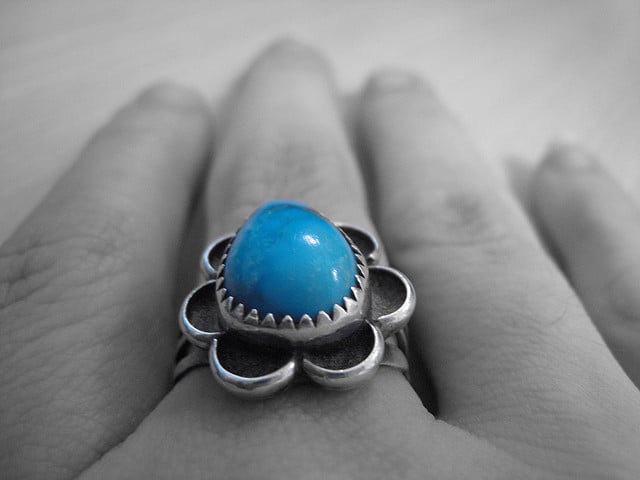Destructive Gemstone Tests: Dye Testing
Gemologists can use dye testing to determine if a gemstone has been dyed to alter its color. Learn how to perform this procedure safely here.
2 Minute Read
Exhaust the Alternatives Before Dye Testing Gemstones
You can often distinguish dye in a gem with a microscope. See our article on identifying inclusions found in enhanced stones for more information on this. Remember, dye testing is a destructive test, so always examine your specimen with a microscope first.
The testing procedure presented here is a last resort, in cases where the microscope exam proves inconclusive.
Frequently Dyed Gemstones
Many soft, porous gems often receive dyes. Lapis lazuli is one of the most common recipients of dyes. Any dark lapis is suspect and needs testing. The same holds true for turquoise.
Gemstone Dye Testing Procedures
- Choose an inconspicuous location on your specimen for your test. (If the stone is faceted, choose a point near the girdle).
- If you’re testing a strand of beads, make sure you don’t get any fluid on the cord. Some of the chemicals used for identification will damage cords.
- Dip a cotton swab in acetone and rub it quickly on an inconspicuous area of the gem. Clean the stone immediately with a damp cloth.
- Check the swab for dye. If there’s a colored residue on the swab, you can be certain
…
Donald Clark, CSM IMG
Donald Clark, CSM founded the International Gem Society in 1998. Donald started in the gem and jewelry industry in 1976. He received his formal gemology training from the Gemological Institute of America (GIA) and the American Society of Gemcutters (ASG). The letters “CSM” after his name stood for Certified Supreme Master Gemcutter, a designation of Wykoff’s ASG which has often been referred to as the doctorate of gem cutting. The American Society of Gemcutters only had 54 people reach this level. Along with dozens of articles for leading trade magazines, Donald authored the book “Modern Faceting, the Easy Way.”
Related Articles
Pearl Value, Price, and Jewelry Information
Lapis Lazuli Value, Price, and Jewelry Information
Turquoise Value, Price, and Jewelry Information
Keshi Pearls and Soufflé Pearls
Latest Articles
Opal Buying Guide
Amethyst Sources Around the World: The Geological Story Behind These Purple Gemstones
Brazilianite Value, Price, and Jewelry Information
Ruby-Glass Composites vs Leaded Glass Clarity Enhancements
Never Stop Learning
When you join the IGS community, you get trusted diamond & gemstone information when you need it.
Get Gemology Insights
Get started with the International Gem Society’s free guide to gemstone identification. Join our weekly newsletter & get a free copy of the Gem ID Checklist!
